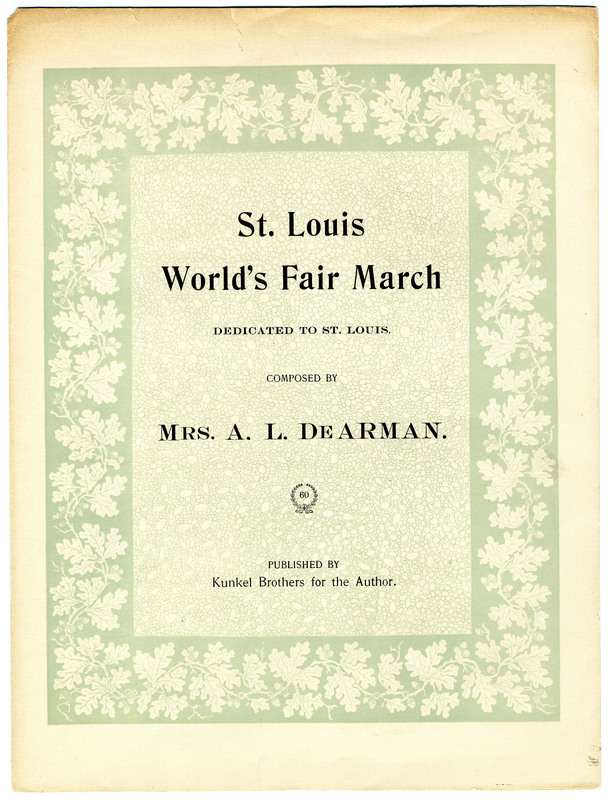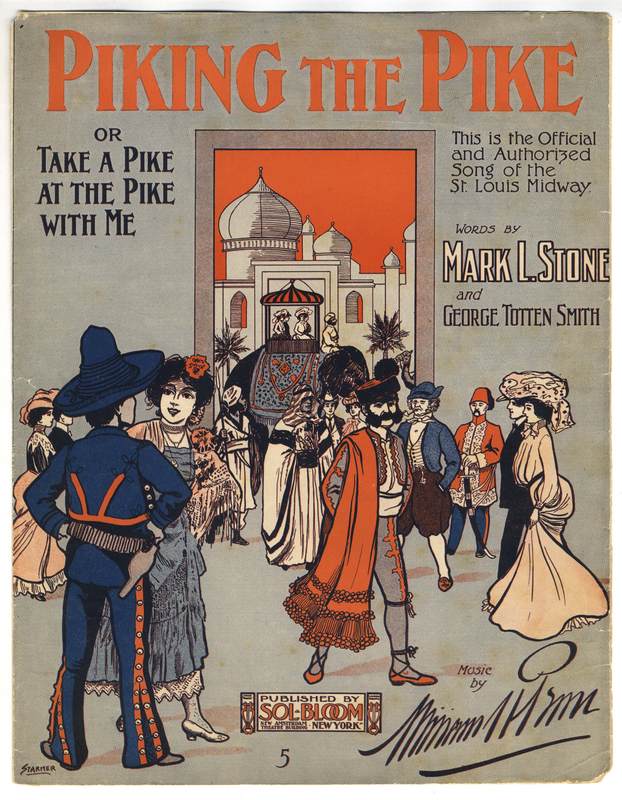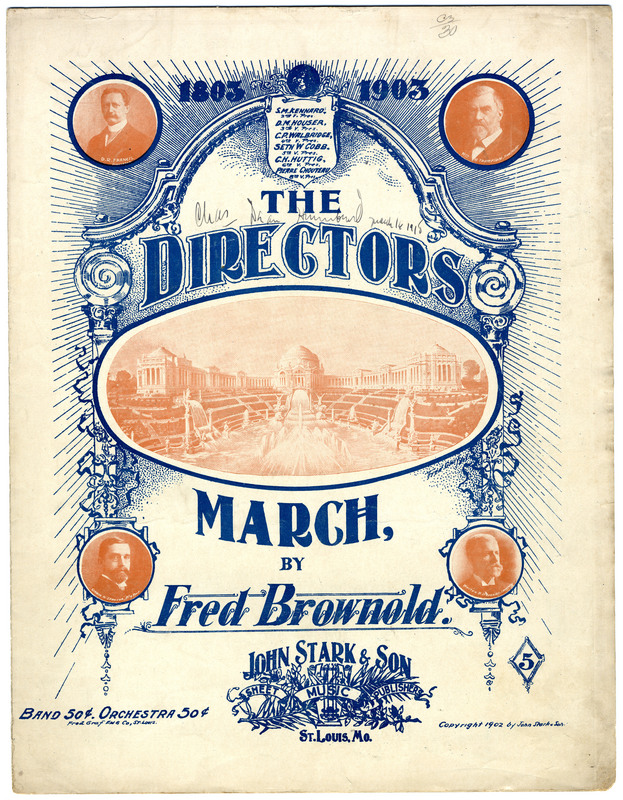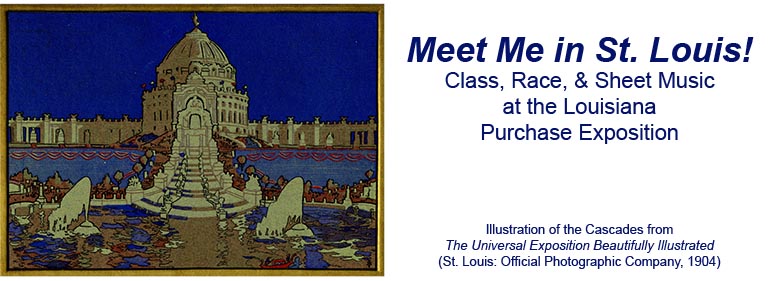Three Musical Styles

Click the image above to view more details about this item;
click here to download a pdf of the score.
Louisiana Purchase Exposition sheet music falls along a three-part continuum: elite-light-popular. Understanding these genres plays an important role in unpacking the social codes surrounding an individual piece of sheet music.
Elite works aspire to the level of European concert music by composers such as Beethoven, Schubert, or Chopin. These works tend to be technically complex for the performers; De Arman’s St. Louis World's Fair March (1904) calls for hand-crossing at the piano, for example. Even skilled players would likely have to practice these works before they were performance-ready. The covers of elite works are often plain, sometimes nothing more than the title and composer’s name displayed inside a decorative border.
Listen to the opening of the St. Louis World's Fair March, including the hand-crossing, here.

Click the image above to view more details about this item;
click here to download a pdf of the score.
On the other end of the spectrum, popular works tend to be less musically complex or technically demanding. Designed to entertain, rather than inspire, such pieces are often sight-readable by competent performers. Common genres included comic songs and dance forms. Popular music, like Piking the Pike (1904), often featured colorful cover illustrations. Turn-of-the-century social norms, as dictated by the dominant white culture, dictated that any music coded as “black” – ragtime, cakewalks, etc. – fell into the popular category, regardless of whether or not it was actually composed by a black person, and regardless of its actual level of musical complexity.
Listen to the closing refrain of Piking the Pike here.

Click the image above to access more details about this item;
click here to download a pdf of the score.
Ranged between these extremes lie the light works – the sort of music you might hear at a pops concert today. Music in dance forms – waltzes, marches, two-steps – often fall in this category. These genres tend to have European origins. Depending on the length and complexity of the piece, it may tend more towards an elite or a popular character. Cover illustrations for such works are often colorful, but more formal than in popular music; compare, for example, the photographs illustrating The Directors' March (1902) to the cartoon scene of Piking the Pike.
Click here to listen to The Directors' March.
The competing values of highbrow education and popular entertainment were a bone of contention for the Exposition’s Bureau of Music. On the advice of the music directors of the 1893 Columbian Exposition in Chicago, the St. Louis organizers originally decided to focus on light-style music (for example, brass bands performing march tunes) as opposed to elite or popular music. Chicago fairgoers had been treated entirely to highbrow concert repertoire and had not been appreciative. But Bureau member Ernest Kroeger (1862-1934) insisted elite music be included, too – though it usually appeared on mixed programs with light music. Read more about Kroeger's role in the musical life of St. Louis and his archives at Gaylord Music Library here.

![[Photo of Ernest Kroeger] [Photo of Ernest Kroeger]](http://omeka.wustl.edu/omeka/files/fullsize/3deae35f7f0174f9d374af0711988596.jpg)